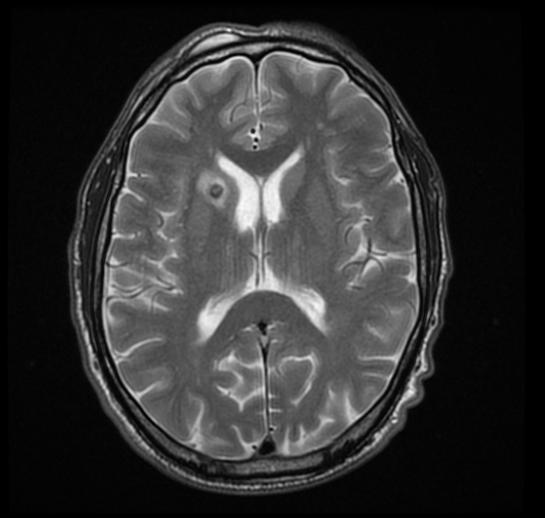Toxoplasmosis CT
|
Toxoplasmosis Microchapters |
|
Diagnosis |
|---|
|
Treatment |
|
Case Studies |
|
Toxoplasmosis CT On the Web |
|
American Roentgen Ray Society Images of Toxoplasmosis CT |
Editor-In-Chief: C. Michael Gibson, M.S., M.D. [1] ; Associate Editor(s)-in-Chief: Aditya Ganti M.B.B.S. [2]
Overview
Toxoplasmic encephalitis is the most common cause of intracerebral mass lesions and is thought to be caused by reactivation of chronic infection. Typically cerebral toxoplasmosis manifest as multiple lesions, with a predilection for the basal ganglia, thalami, and corticomedullary junction. Intracerebral mass lesions can be diagnosed using CT scan. Findings of CT brain include multiple hypodense regions predominantly in the basal ganglia and at the corticomedullary junction.
CT
Toxoplasmic encephalitis is the most common cause of intracerebral mass lesions and is thought to be caused by reactivation of chronic infection. Typically cerebral toxoplasmosis manifest as multiple lesions, with a predilection for the basal ganglia, thalami, and corticomedullary junction. Intracerebral mass lesions can be diagnosed using CT scan. Findings of CT brain include:
- Multiple hypodense regions predominantly in the basal ganglia and at the corticomedullary junction.
- Size is variable, from less than 1 cm to more than 3 cm, and there may be associated mass effect.
- Enhancement: following administration of contrast there is nodular or ring enhancement which is typically thin and smooth 5
- Double-dose delayed scan: may show a central filling on delayed scans
- Calcification: seen in treated cases; may be dot-like or thick and 'chunky'



